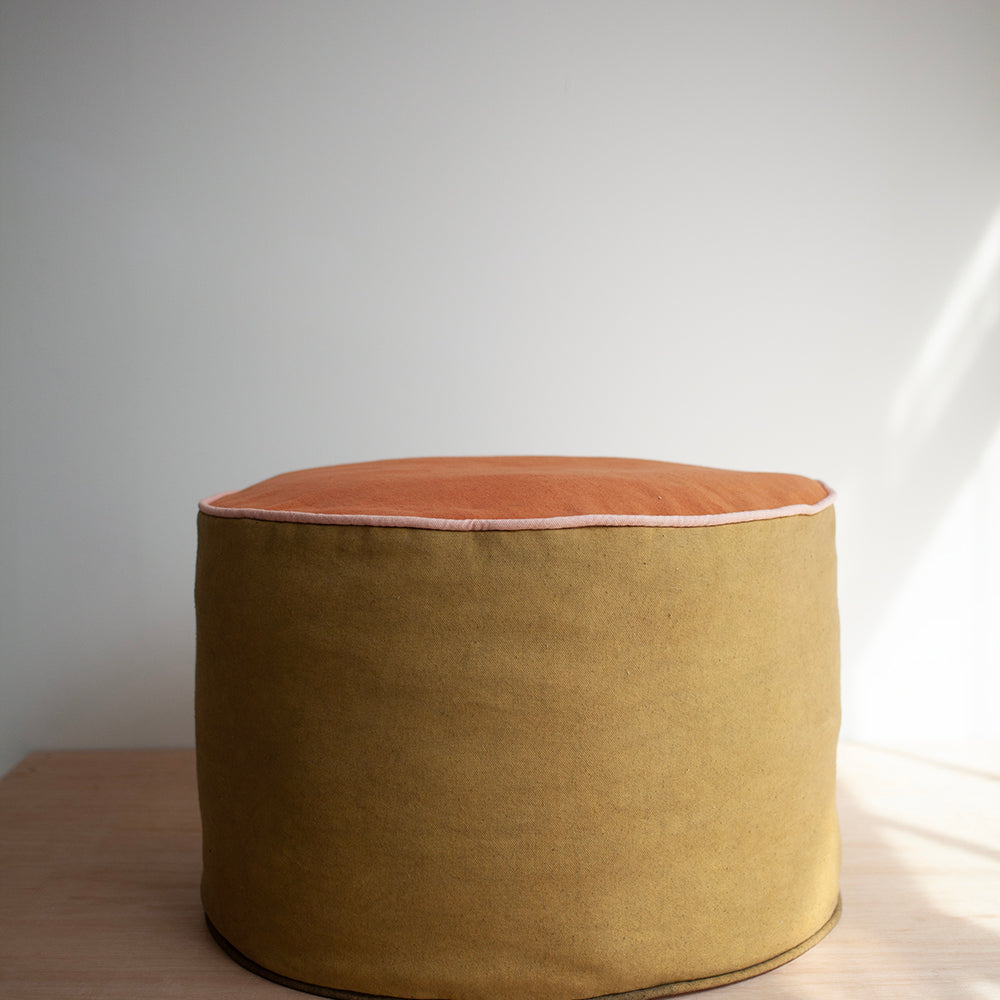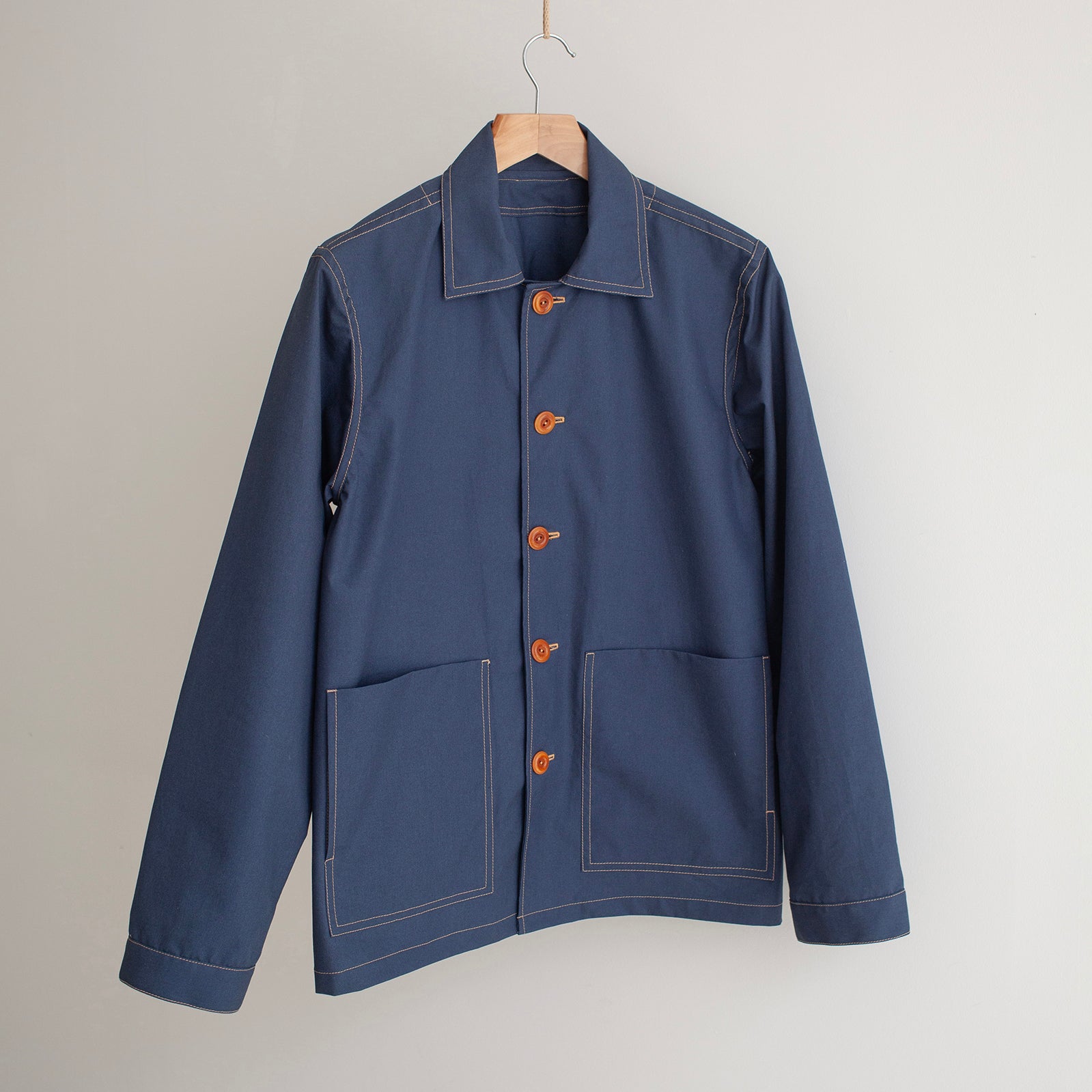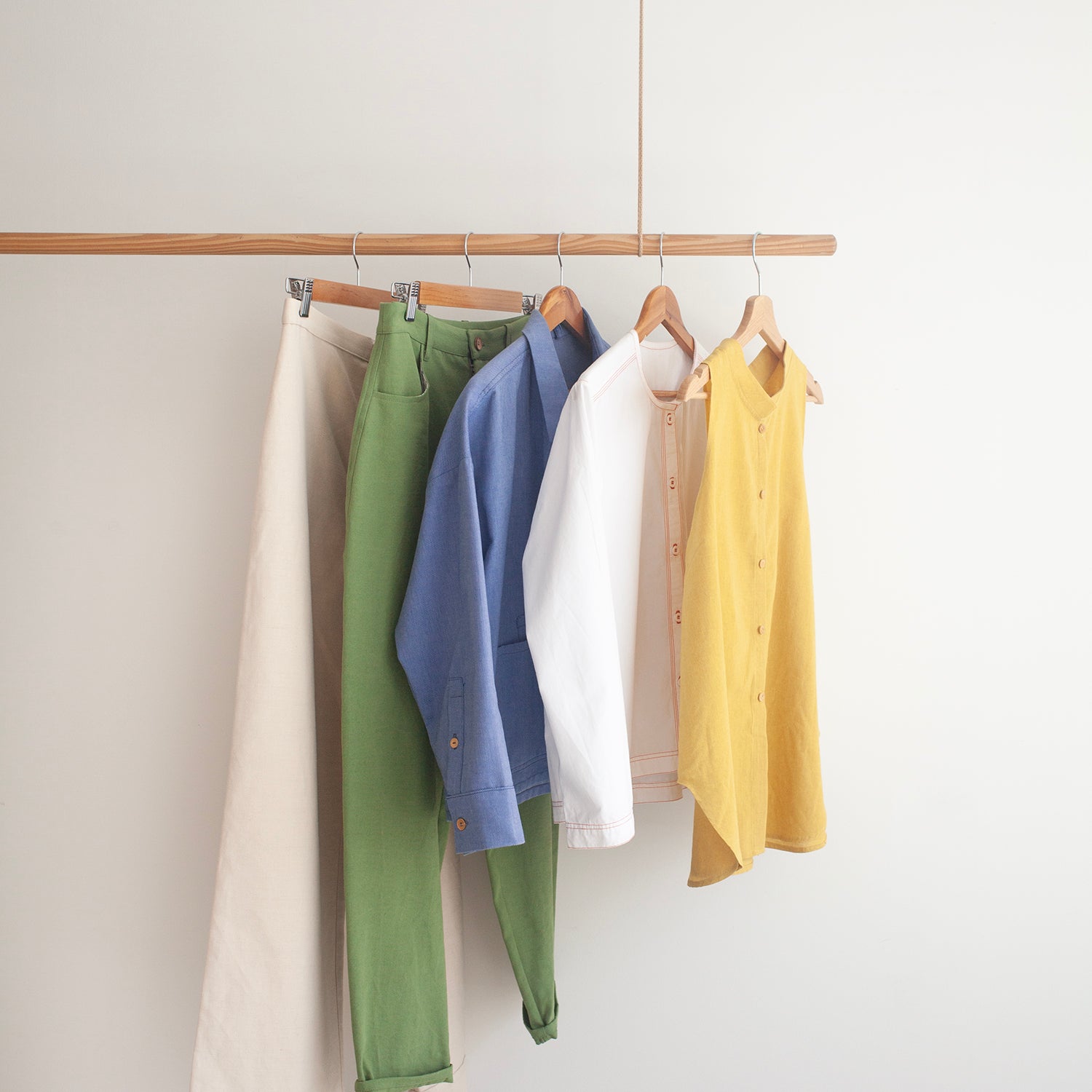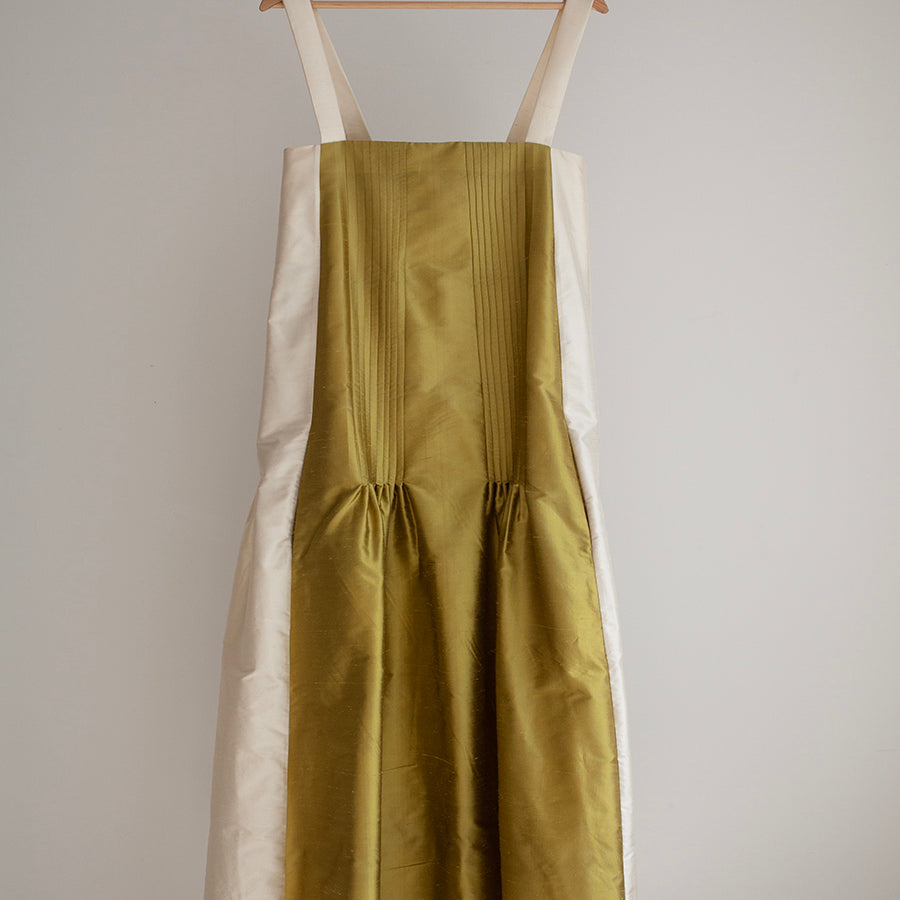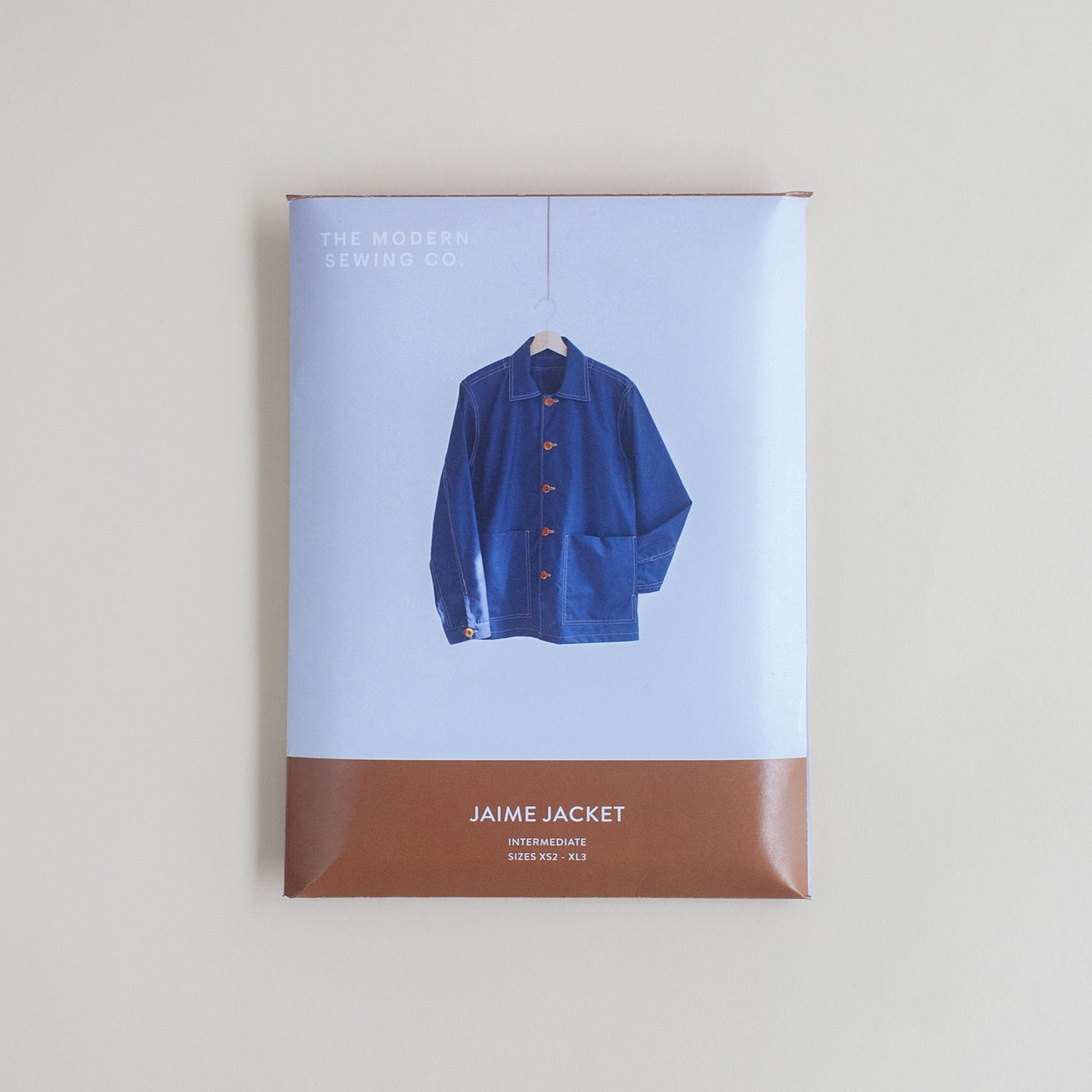
Tips & Tricks for a great finish
If you've been following us for more than 3 weeks the chances are you might have seen the latest addition to our PDF pattern range, the Darcy Coat.
Following the launch of this pattern I wanted to share some tips and tricks for making this coat to a great standard. Sewing a coat is a fairly long process so it's a good idea to approach it with as much care and thought as possible.
In this email I've listed a few thoughts ranging from how to approach the project, fabrics choices and practical tips on making. I hope there are a couple of useful pointers in here and I'm looking forward to seeing the makes start to roll in (a few are coming through on instagram already)!
Please let me know if you have any questions and Happy Sunday from Bali!
Hetty
x

No Deadlines
The first tip I have is to take plenty of time to sew this piece. This might sound obvious but it's really important. Even as an experienced sewer I spent a long long time creating this coat. It's a hefty make, WELL worth the effort but do not try to give yourself any deadlines whatsoever. It's not that it's particularly hard (it really is very achievable) but it has lots of different components and it will be a longer making journey.
Materials: Fabric & Fastenings
When it comes to choosing your fabric I recommend choosing something you really really love. If there's a garment to splash out on for the fabric it's this one. This piece should be in your regular wardrobe rotation for 10+ years and it's really important to choose a high quality, long lasting fabric. Factor in that this piece has a longer make time and you'll want to make sure that you're working with a fabric that does justice to your efforts.
(Side note: you shouldn't need to toile this garment before making your final piece. It's an oversized cut so you should be able to dive straight into making the final piece).

Fabric Options
There are a few options you could choose for your fabric and your choice will really determine the kind of garment you're going to make.
-
Wool
The classic choice for a winter coat. If you're choosing wool I recommend opting for 100% wool (not an acrylic blend) and choose a nice lining to go with it. In terms of weight you could go for a thick felt, a lightweight wool suiting or anything in between.
Waxed Cotton
Perfect for an elegant but practical coat. If you choose a dry waxed cotton you can leave it unlined (and be careful with the iron, choose a medium/low setting). Patch pockets are preferable for waxed cotton as the fabric doesn’t have much flexibility to create a neat finish with welt pockets.
Linen/hemp
This coat would work beautifully in a thick linen to create a smart summer jacket that could be worn to a wedding or smart occasions.
Gaberdine
For a very classic trench look a gabardine fabric would work beautifully (the optional belt might come into play for this fabric).
Denim
To create an amazing statement piece go for a denim (extra cool points for this option).

Fastenings
This garment potentially requires buttons AND snaps for fastenings due to the two different fastening areas: the centre front and the sleeve tabs. Some fabrics will benefit from a button fastening down the centre front instead of a snaps fastening. And the sleeve tab was designed with snaps in mind but it could also be fastened just as well with small buttons.
Have a think about the combination you want to go for. On my wool version I opted for buttons on the centre front and snaps on the sleeves. For my waxed cotton version I used snaps on the entire coat. If you're choosing a combination of buttons and snaps have a think about the colours of both and check they visually work well together.

Making Tips:

Welt Pockets
Welt pockets are a really nice feature and they're not as hard as they look. They're very satisfying to sew once you've got the knack so I recommend practising on some scrap fabric if you're intrigued.
One tip I have for getting a neat finish of your welt pockets is to use a piece of card to help with the pressing. By cutting out a corner (as shown above) you can then fit this around each corner of the welt to give it a really firm press without the layers underneath making too much of an indent to the outer fabric layer. See below for the (almost!) finished results.

Pressing
I can't overstate the importance of pressing, especially when it comes to working with wool. When you're pressing a big wool coat it feels long and boring. The coat is heavy, it slips off the ironing board all the time and it's not creatively satisfying. But I wanted to share some process pictures to show you just how much you can achieve with an iron.
The picture below shows the coat fully finished except for the front buttons. It doesn't look like the professionally finished coat I had in mind.

The picture below shows the coat after a long and thorough pressing. Getting better...

And the final picture below shows the coat with the buttons and button holes attached and at least one (maybe 2) more really thorough full garment pressings. The difference is amazing. I encourage you to spend lots of time with your iron when sewing this piece.
Just to add to that, not all fabrics are iron friendly. Lots of wools are mixed with polyester so I really recommend trying to source a 100% wool fabric. It will be warmer to wear, longer lasting and the pressing process will be much easier as you won't need a protective cloth between the iron and the fabric.
You also won't be able to press waxed cotton to the same level but you can add extra topstitching to the edges which helps to give it a crisper look.

Here's a little snap of me feeling very happy to have finished the coat! This was on a wintery Friday night after a long week of sewing and development. It was a very good feeling!

Make your own Darcy Coat

